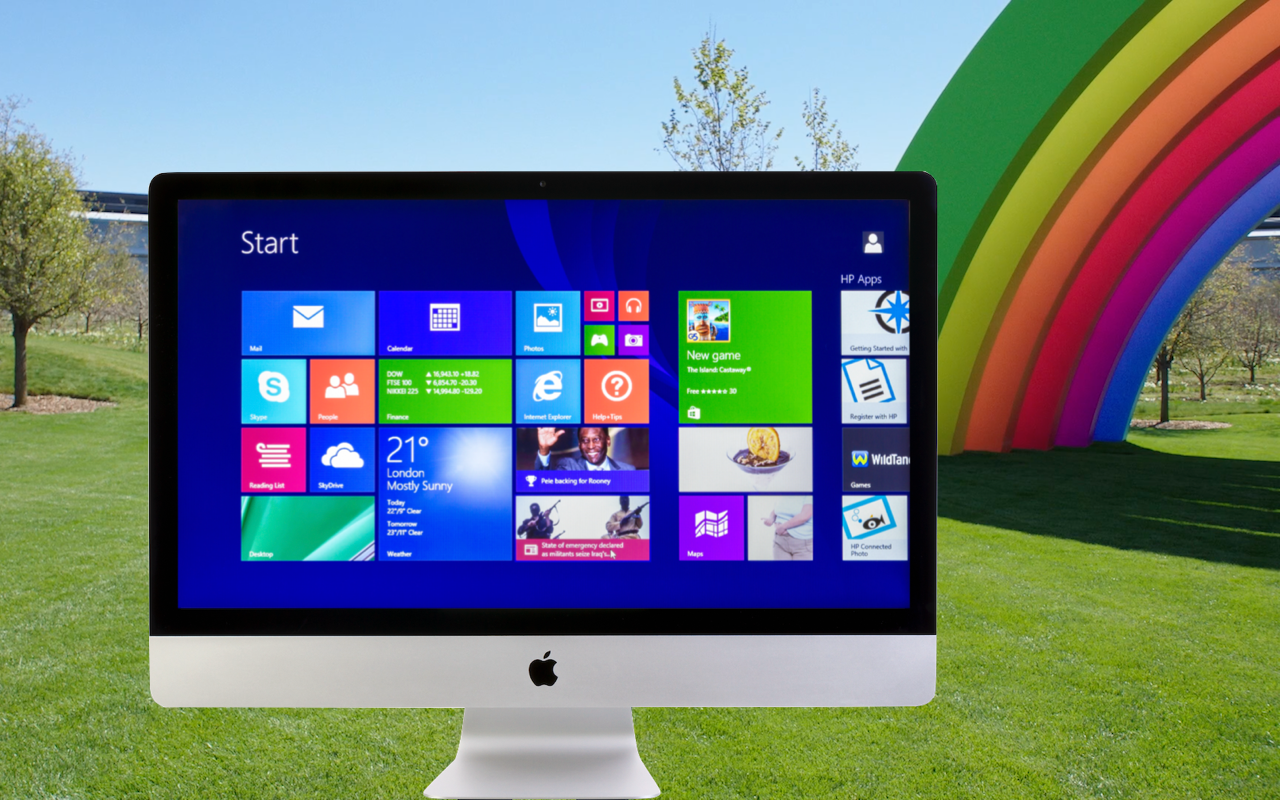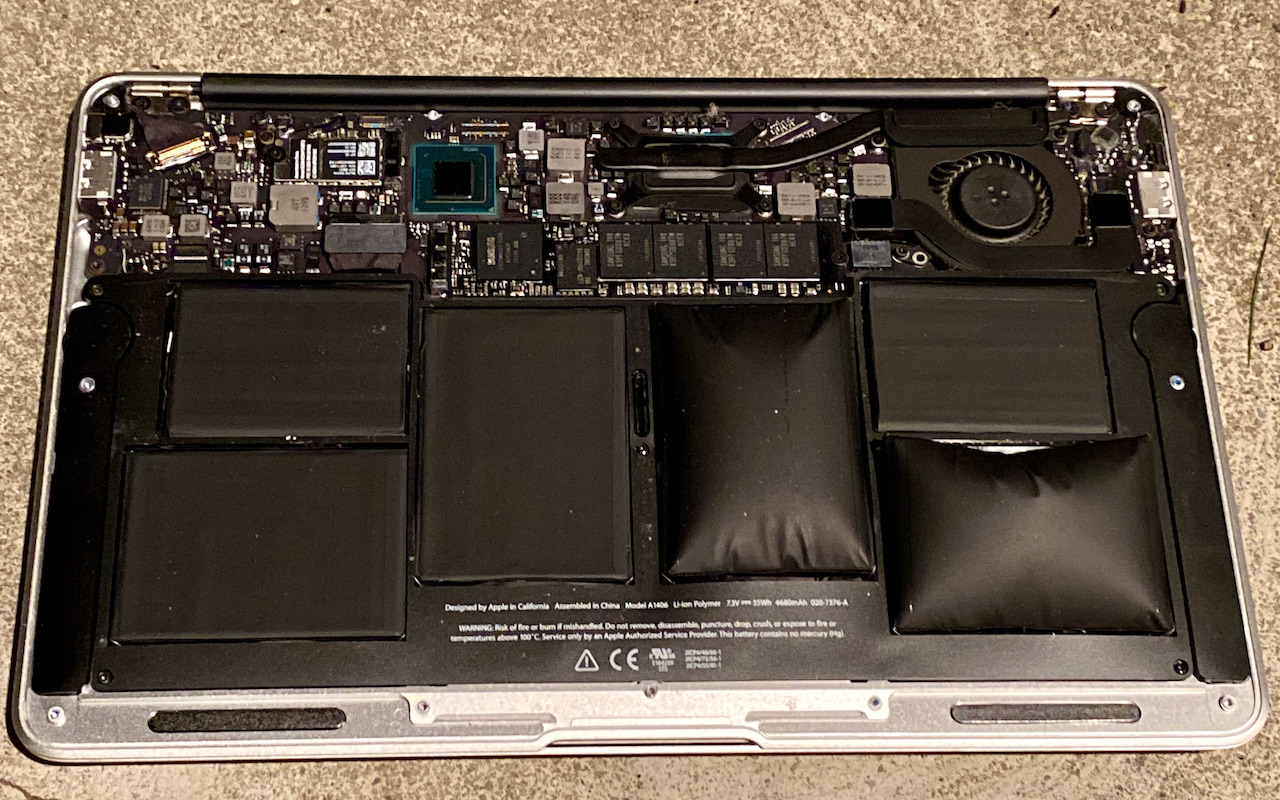How to Mirror or Extend Your Mac Display with AirPlay
Apple’s AirPlay is more versatile than many users realize. Beyond streaming audio and video from an iPhone, iPad, or Mac to an Apple TV, it also allows you to use that TV as an external display for your Mac by mirroring your screen or extending your desktop. You can even use one Mac as a wireless display for another.
This functionality is especially useful when presenting to a group or when you need additional screen space without the hassle of rearranging cables. It’s a strong case for having an Apple TV-equipped display in a meeting room—or simply making better use of the devices you already have.
In this article, we’ll focus on AirPlay’s external display capabilities, including three key options: mirroring your entire screen, selecting apps or windows, and extending your desktop.
How to Set Up AirPlay to Receive Video
Before you start, ensure all devices have Wi-Fi turned on and are connected to the same network. If you’re using AirPlay to stream to a Mac, it must run macOS 12 Monterey or later. For best results—especially when working between personal devices—sign in with the same Apple ID on each one.
Next, check that the screen you want to mirror is ready to receive the video.
If you’re using an Apple TV, AirPlay is likely already enabled. To confirm, go to Settings > AirPlay and HomeKit and make sure AirPlay is turned on. You can customize who has access by choosing between “Everyone,” “Anyone on the same network,” or “Only people sharing this home.” You also have the option to require a password for added security.
Consider setting up the Apple TV as a conference room display for office environments. This mode shows connection instructions on the screen saver, requires a PIN to connect, and allows you to customize the background photo and on-screen message, making it ideal for group use.
Finally, look at the AirPlay Display Underscan setting. Turning it on reduces the chance of cropped screen content; turning it off can eliminate black bars. The “Auto” setting attempts to choose the best option, though cropping may still occur depending on the display.
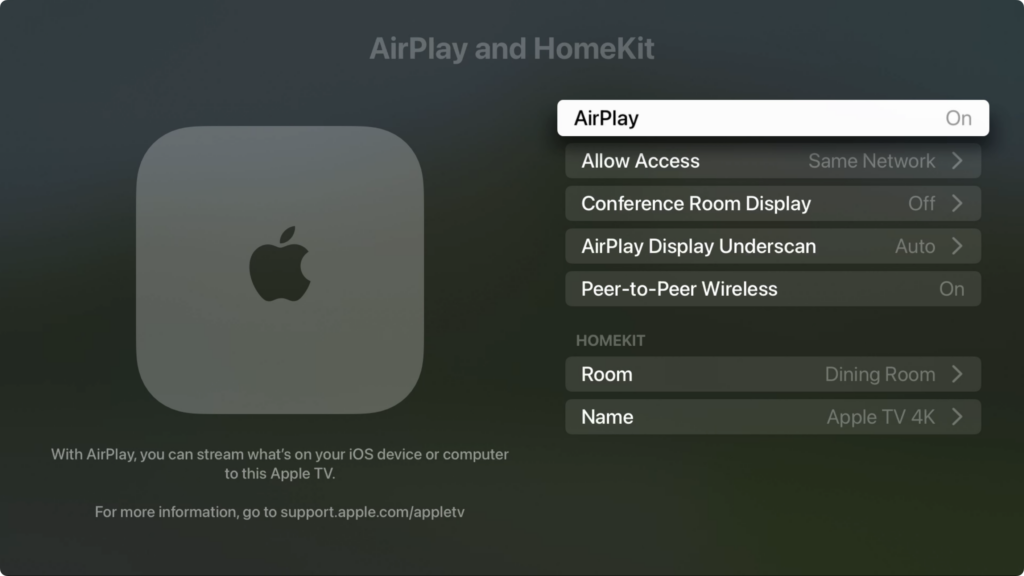
On a Mac, go to System Settings > General > AirDrop & Handoff and turn on AirPlay Receiver. Then use the “Allow AirPlay for” menu to specify who can access it, and if you want to require a password.
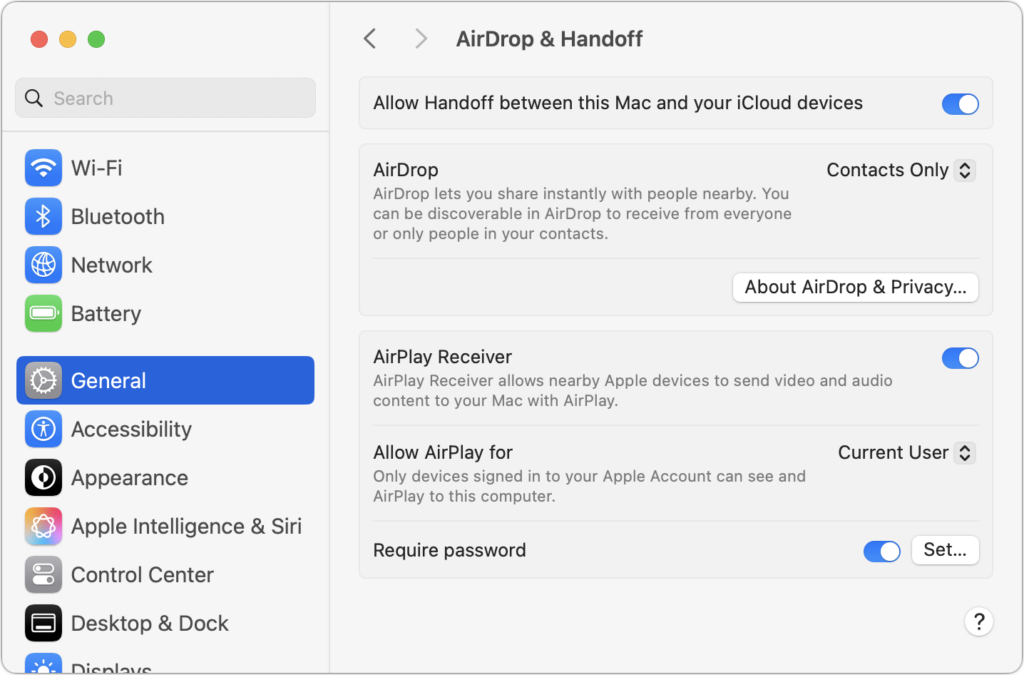
Mirror Your Mac’s Screen
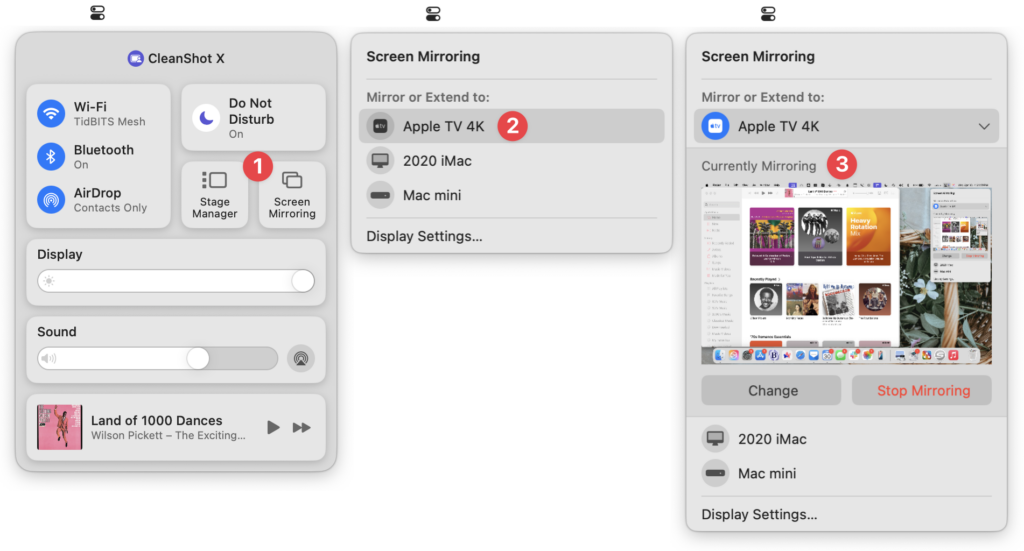
After connecting, you may find that the mirrored display doesn’t have an ideal resolution. To adjust it, open System Settings > Displays. You can also get there quickly by clicking Display Settings in the window that appears during the mirroring setup. In the Displays settings screen, use the “Optimize for” menu to choose whether the resolution should favor your Mac’s built-in display or the external one. If you select the external display, you can choose from a full list of available resolutions to find the one that looks best.
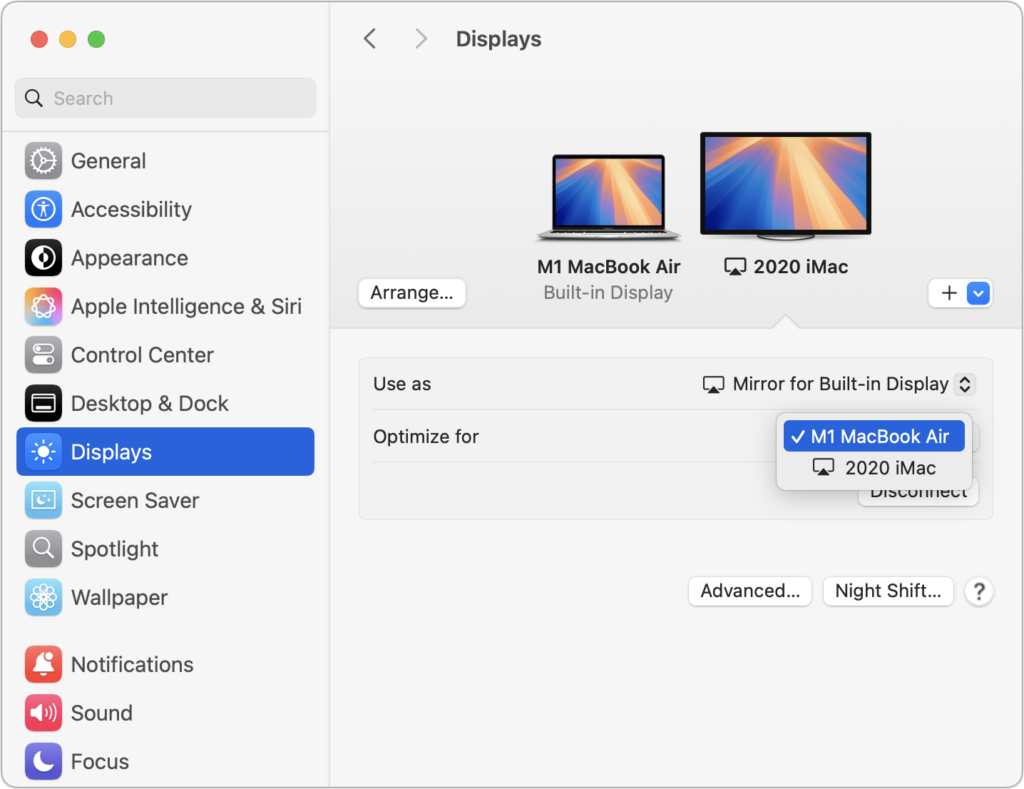
If you’re mirroring to a Mac that has multiple displays connected, look for a small, dark menu bar in the upper-left corner of the screen receiving the video. This control lets you choose which Mac’s displays you want to mirror.
Mirror Selected Apps or Windows
Sometimes, mirroring your entire desktop is more than you need, especially if you’re only trying to share a single app or window. Starting with macOS 15.2 Sequoia, you can now mirror just the content you want, which helps keep your desktop clutter-free and any sensitive information out of view.
To do this, open Control Center, click Screen Mirroring, and select the display you want to use. Next, click Change or Choose Content. In the dialog, choose whether you wish to mirror a single window or all windows from a specific app. Then click Choose Window or App to make your selection.
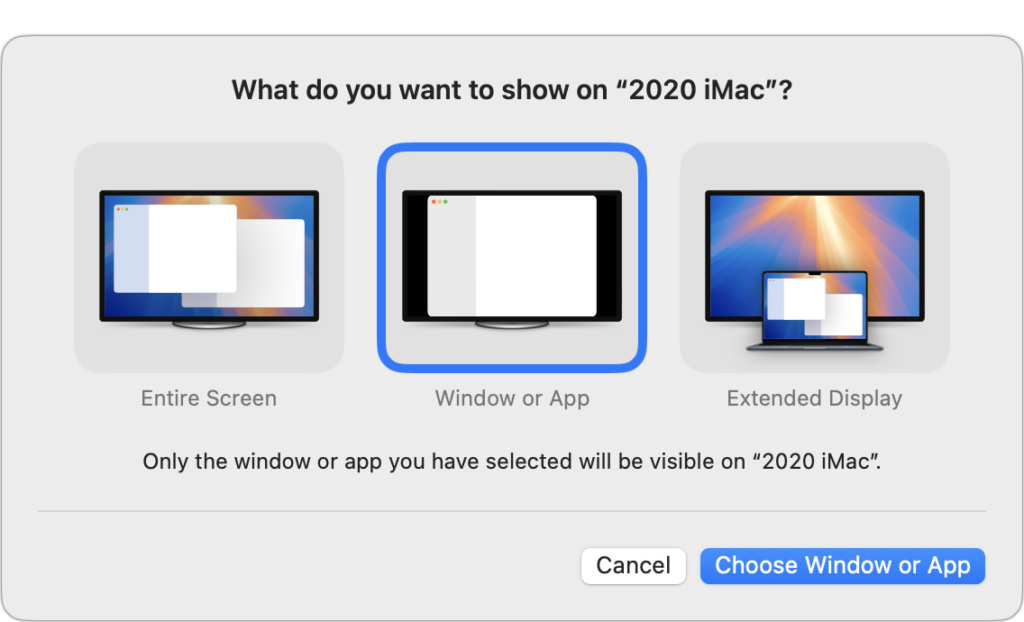
Select the desired window and click Mirror This Window or Mirror All Application Windows.
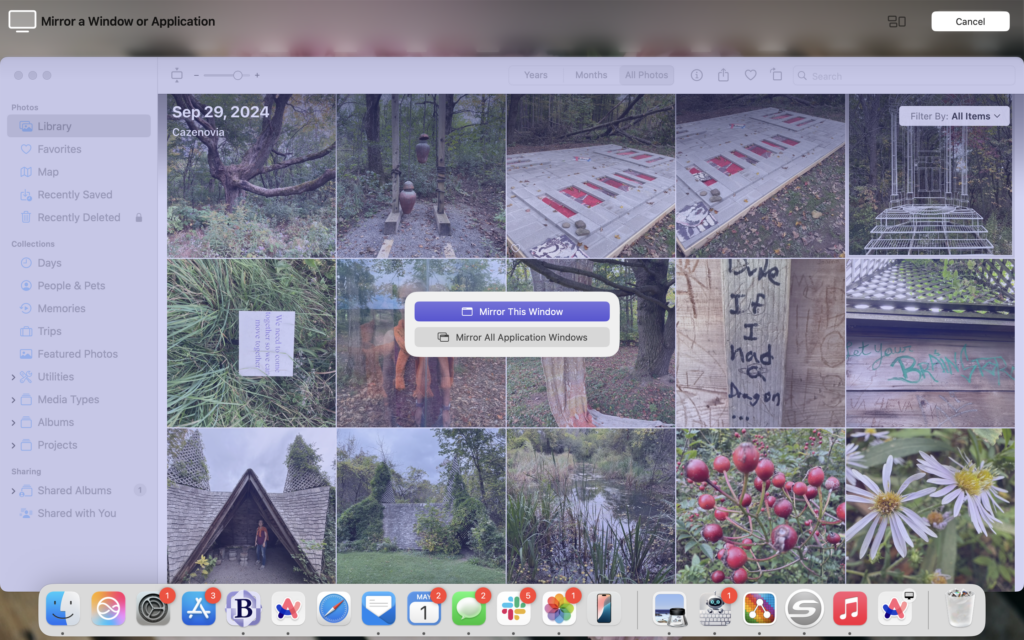
You’re not limited to mirroring just one window or app. If you need to share more, you can add additional windows by clicking the purple Screen Mirroring icon in the menu bar, selecting Add Windows, and choosing what else to include. If you want to switch from one window to another, select the currently mirrored window and click Stop Mirroring This Window before choosing a new one.
Extend Your Mac’s Desktop
While mirroring is great for presentations or group settings, sometimes you need more screen space. In that case, you can use AirPlay to extend your Mac’s desktop to another Mac or an Apple TV, giving you extra room to work without connecting a physical monitor.
To set this up, open Control Center, click Screen Mirroring, and select the device you want to use. Then click Change, choose Extended Display in the dialog, and click Extend Display.
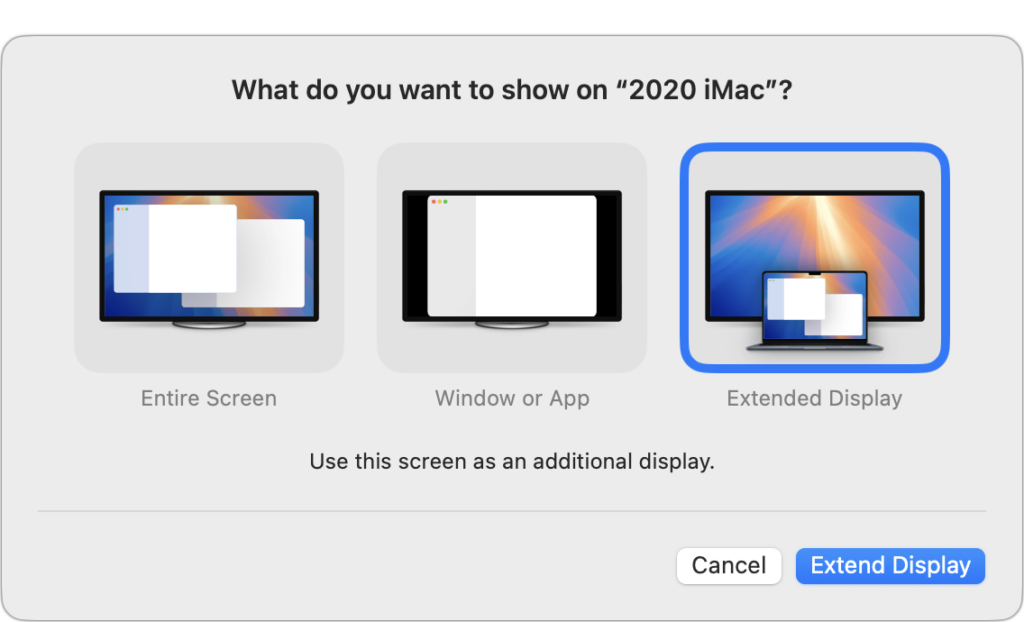
Once you’ve extended your display, you may need to make a few adjustments to get things looking just right. Open System Settings > Displays, then click on the second display to access its settings. You might want to try a different resolution to see more or less content on that screen. Clicking Show All Resolutions will reveal additional options, but remember that not all of them are ideal—some may appear with a “low resolution” label, resulting in a fuzzier display.
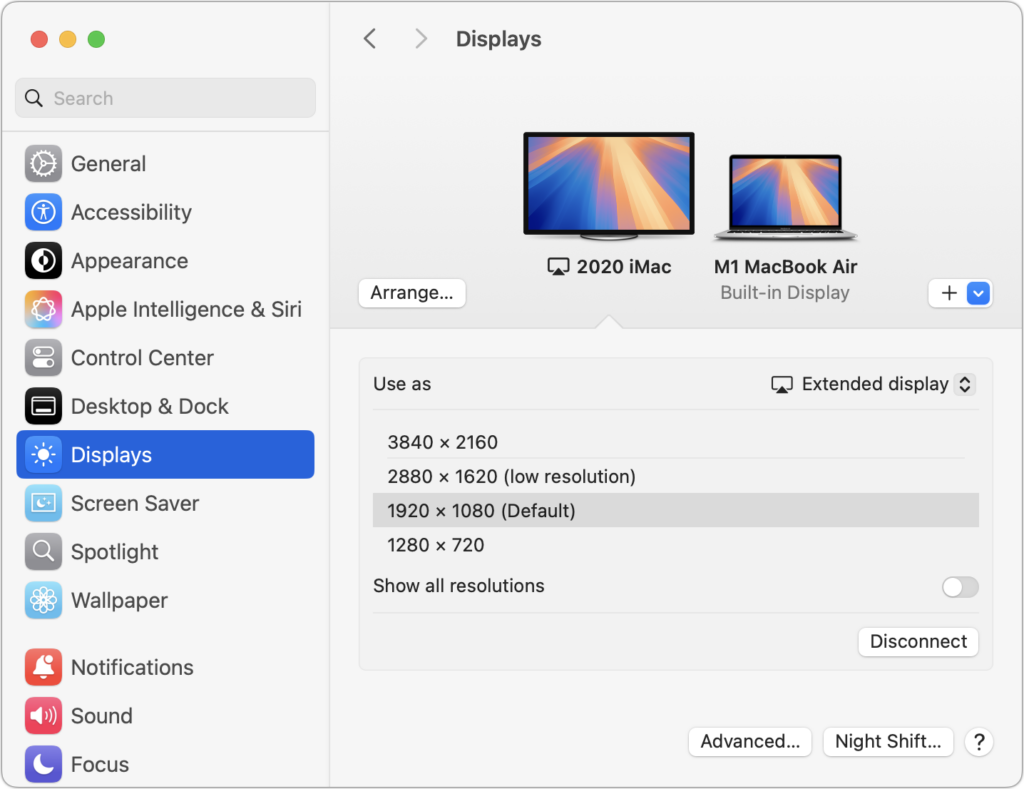
After setting your preferred resolution, arranging the displays to match how they’re physically positioned is important. For example, if your second screen sits to the left of your Mac, you’ll want to drag its representation to the left in the settings so that moving windows between screens feels natural. To do this, click the Arrange button, reposition the displays as needed, and then click Done to save the layout.

Once you’ve set up screen mirroring or desktop extension, switching between modes is straightforward, and macOS will remember your most recent choice. So if you typically mirror your full screen or extend your desktop, selecting Screen Mirroring in Control Center will default to that option the next time. The exception is window-specific mirroring, which always requires choosing the window or app you want to share.
To stop mirroring, you have several options. You can click Stop Mirroring from the purple Screen Mirroring icon in the menu bar, or go back to Control Center, select Screen Mirroring, and click Stop Mirroring there. You can also use the Disconnect button in Displays.
If you’re mirroring to another Mac, the small dark menu bar at the top of the receiving screen includes an X button to end the session from that device. And if you’re using an Apple TV, simply turning it off will stop the connection.
AirPlay screen mirroring or desktop extension may not be something you need every day. Still, when it comes to giving a presentation, collaborating with a group, or adding extra screen space without rearranging hardware, it’s an incredibly useful tool to have on hand.
(Featured image by iStock.com/Ratchapon Supprasert)
Need Help? Contact us to learn how we can help your business.





